Feet and arthritis
We all need to take good care of our feet, but arthritis means paying particular attention to your feet and being meticulous when choosing footwear. There are more than 200 arthritis diseases. Many of them have a number of symptoms in common, but how severe they are and how they affect each individual varies from disease to disease, and from person to person.
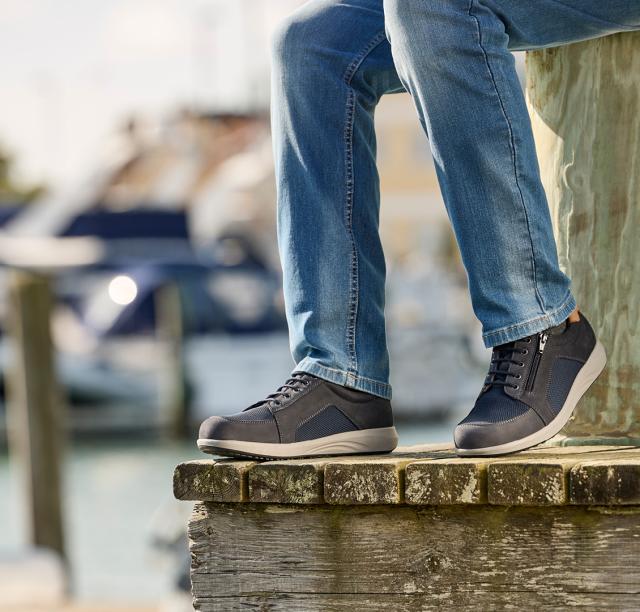
What happens to your feet when you have arthritis?
Pain and stiffness in the joints is the common denominator for the vast majority of arthritis diseases. The symptoms can vary, so that sometimes you do not notice your arthritis, while at other times you can be very bothered and affected.
The earlier in the process you get a diagnosis and get treatment, the better.
There are many types of arthritis
Foot pain from arthritis can be very bothersome and slightly disabling for many people.
There are various arthritis diseases that affect the feet, but the most common are rheumatoid arthritis, osteoarthritis, gout and psoriatic arthritis.
Rheumatoid arthritis / Arthritis
Rheumatoid arthritis is an inflammatory, autoimmune chronic disease. In short, it means that you have an inflammatory reaction in your joints that is not due to bacteria.
The cause of rheumatoid arthritis is due to changes in the immune system. The joints that are attacked will typically be swollen and painful. You will also feel more tired, possibly get a fever and lose weight and it can be difficult to get going in the morning due to stiffness in your body.
Osteoarthritis / Degenerative joint disease
Osteoarthritis is a chronic disorder that gradually and quite slowly destroys the affected joints.
We do not really know why some people get osteoarthritis. However, factors such as heredity, age, strenuous work, other rheumatic diseases and previous injuries to the bones of the body can provoke osteoarthritis.
Uric acid / Gout
Gout in Latin is called arthritis urica and is also known as podagra, which is the term for gout in the big toe. But also other joints can be attacked, for instance, ankle, knee, wrist and finger joints.
The symptoms develop within a few hours and manifest by the affected joints being very painful and becoming sore, and at the same time as they swell and turn red.
Psoriatic arthritis
Psoriatic arthritis is a joint disease that often affects one or more joints on the fingers or toes, but there can also be pain in the back and lower back or pain in arm and leg joints.
10-30% of people with the skin condition psoriasis develop psoriatic arthritis.
What does arthritis mean to your feet?
The misalignments that most often affect people with arthritis are hammer toes, bunions, flat feet or that the joints of the foot rotate, so that exposed places are heavily strained. When there is too much pressure on places on the foot that are not designed to take that much pressure, the skin immediately starts producing more skin to protect the exposed places. At these points, very hard skin can form that for many will also be a combination with corns.
Many also experience nail changes which in some cases lead to ingrown nails. It becomes painful to move and many people change their way of walking and thereby also experience pain elsewhere in the body.
At the same time, you may be unlucky and suffer from stiff joints, reduced mobility in the joints and weak muscles, which makes the situation worse.
What can you do yourself?
- Stay up to date about your disease – get to know it, and get to know your limitations and see your options.
- Make a short-term and long-term treatment plan for the disease together with your doctor and possibly a rheumatologist.
- Make sure to exercise – find the level that suits you.
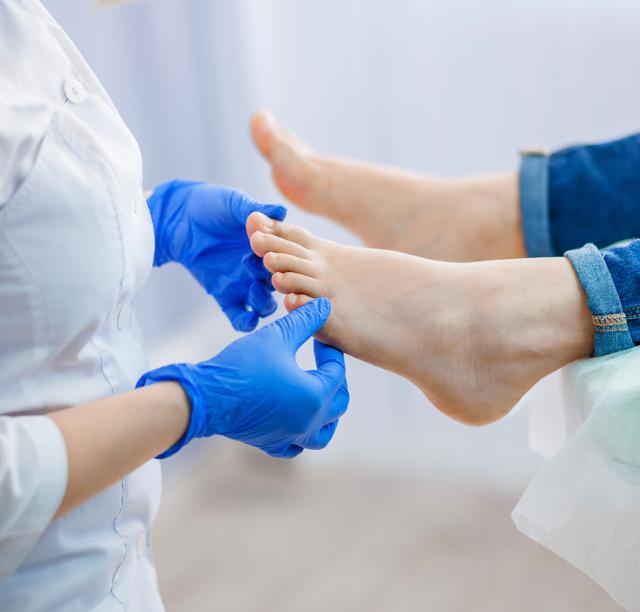
Other good things you can do to prevent it
- Go to a professional regularly.
- Talk to your practitioner if there is a need for insoles or other types of relief and get good advice on choosing footwear.
If you have been diagnosed a disease that requires footwear and insoles, it is important that you listen to your practitioner's advice. Your own experiments can have serious consequences. Our resellers and us are happy to advise, but it is your practitioner who has access to your medical history. Therefore the practitioner's advice is very important.
Exercise
We know that we need to move as much as possible, as it is healthy, but it is not easy to walk or run if it hurts. If you have pain in your feet - ankle - hip - knee - back - get it examined so you can do something about it or prevent it.
Remember that you do not have to complete an Ironman Triathlon to do something good for yourself and your health. Ordinary walking – taking a walk is good for both the body and soul. If you walk for half an hour every day, you can quickly feel that you can walk a little longer and a little faster each time.
A visit to a hot water pool can also be really good - then you can do a lot of exercises done that you may have trouble doing when you are not in the water, and you get nice and warm.
There are numerous different ways to exercise. It is important that what you choose suits your level, needs and wishes. Remember, exercise should be fun!
Your feet are the body's foundation – they have to support you all your life.
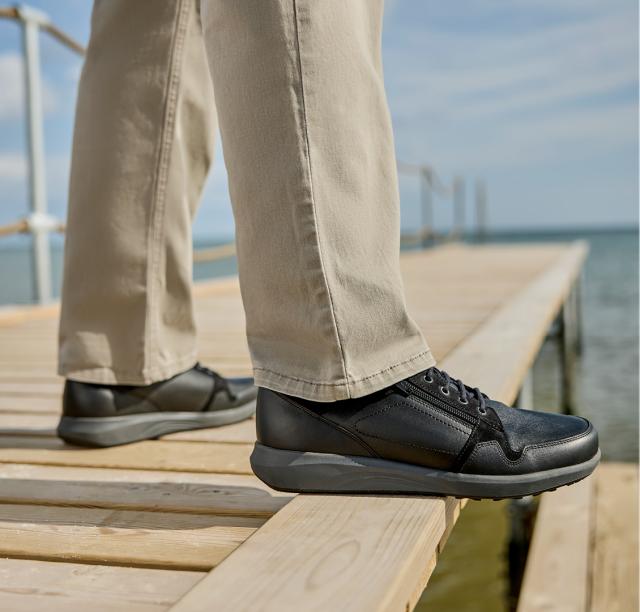
Choice of footwear
There is so much footwear to choose from, and it can be hard to know what is good and sensible footwear. There is a difference between whether the footwear is to be worn for a party, everyday or exercise. Your daily footwear should be some of the best you have and good for your feet. Footwear should protect your feet and help to ensure your gait is as natural as possible.
Shoes must fit your feet – your feet must not fit your shoes! Your feet are often affected when you have arthritis. Therefore, your choice of footwear for feet with arthritis is important. Your footwear must be long enough and wide enough, and be able to be fastened to your foot with velcro or laces. A good stable heel cap ensures that you get the support you need. There should also be plenty of room above your toes so there is no pressure. If you have hammer toes, it is particularly important that there is plenty of room. It is also very important that there are no internal annoying seams.
Make sure to check your footwear at regular intervals to see if it still fits your feet as your feet change over time.
Sometimes it is not possible to find footwear that fits, and then an alternative can be hand-sewn footwear, or semi-orthopaedic footwear. Talk to your doctor, shoemaker or chiropodist about this, and in some cases you may be referred further so that you can get a financial allowance.
Choice of socks
Socks should have plenty of room over the toes and not have seams or elastics that can cause pressure injuries. If you have swollen feet, talk to your doctor about the cause of the swelling and get treatment for it.
- Change socks everyday – or twice a day if you sweat a lot.
- Wool for cold feet.
- Cotton for hot feet.
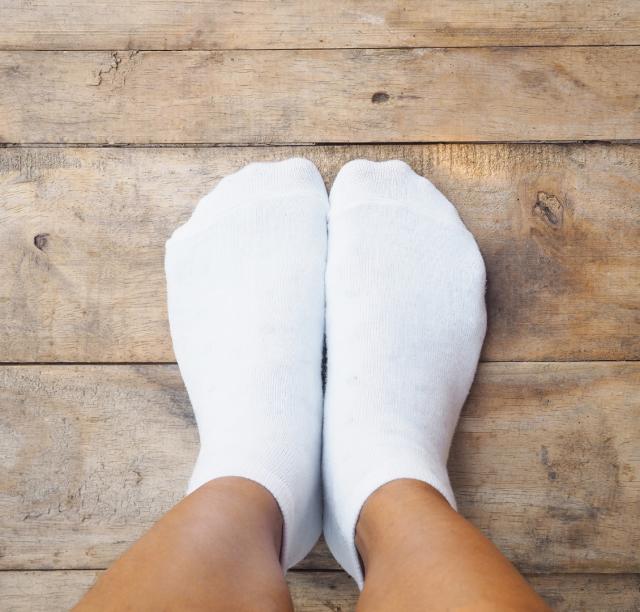
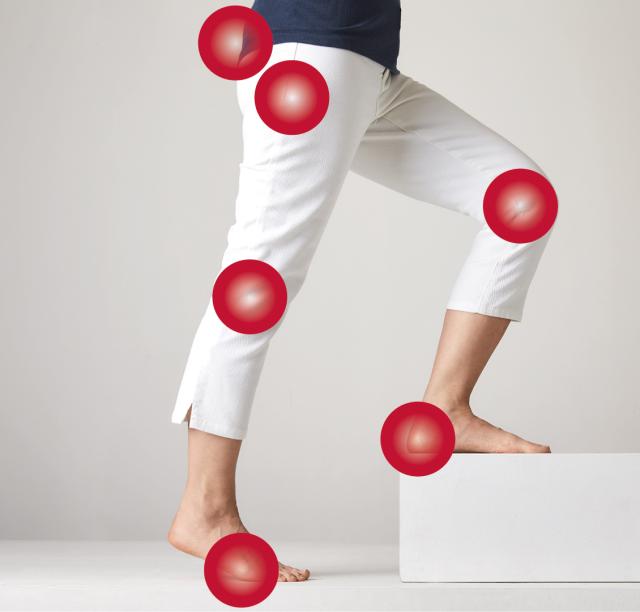
Insoles for arthritic feet
In many cases, an insole will alleviate your discomfort. An insole aims to relieve, support, correct or to some extent train your feet. This means that pressure is distributed so that the risk of hard skin, corns and pressure on the bones is minimised, and there is also less pain.
Read more about our Korrektor® insole here.
Many people also benefit greatly from getting a sole that is shock-absorbing as the body fat under the feet can diminish and you walk directly on your bones.
Read more about our 3 mm and 6 mm shock-absorbing soles here: Protektor®.
All footwear from New Feet has a 6 mm shock-absorbing sole inside the footwear – read more about New Feet footwear here
In other cases, it is necessary to have a custom insole made according to your footprint.
You can but the best insoles in the world, but they are never better than the footwear they are put in. Choose footwear with plenty of room - removable sole - high stable heel cap, laces or velcro closure. This is because it is important that the footwear fits firmly so that the foot is held in place on the insole.
Get advice and guidance from a practitioner to find footwear that is appropriate so that your insole works optimally.
Have you been diagnosed with a disease?
If you have been diagnosed a disease that requires footwear and insoles, it is important that you listen to your practitioner's advice. Your own experiments can have serious consequences. Our resellers and us are happy to advise, but it is your practitioner who has access to your medical history. Therefore the practitioner's advice is very important.